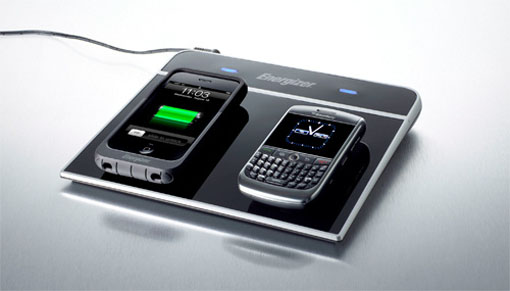 Are you fed up with all those cords and wires of your mobile charger? Do you love to have anything that gets rid of wires around you and thus makes your life unplugged? Then, here is the right technology for you that let you charge your gadgets without having to mess with wires. Qi Technology introduces Wireless Charging Stations.
Are you fed up with all those cords and wires of your mobile charger? Do you love to have anything that gets rid of wires around you and thus makes your life unplugged? Then, here is the right technology for you that let you charge your gadgets without having to mess with wires. Qi Technology introduces Wireless Charging Stations.
Qi technology is the new universal standard for inductive charging. Qi is pronounced chee in traditional Chinese culture, which means energy flow. The literal translation of “qi” is air, breath, or gas. Qi is often compared to the yogic notion of prana, meaning vital life or energy. Compare this to the original meaning of the Latin word “spiritus“, meaning breathing; or and the Sanskrit term “prana”, meaning breath.
Qi technology delivers easy, convenient, cord-free charging for any Qi-enabled device. It is developed by Wireless Power Consortium , a business alliance of 20 firms to develop open standards for Wireless Charging. The organization was started in 2008 to create an universal wireless power charging standard so that electronic products and charging stations using the same standard will recognize each other and charge.
Qi ensures interoperability between Qi devices from different companies to power and charge on any Qi charging station. Qi allows you to charge smart phones, cameras, MP3 players and anything else that needs 5W or less without directly plugging the devices into anything.
Inductive charging is actually a sub-section of wireless charging. Inductive just means that the energy is transferred from the pad to the device using electromagnetic fields. The principle behind this is inductive power transmission using the electromagnetic field to transfer energy between two objects. A charging station sends energy through inductive coupling to an electrical device, which stores the energy in the batteries. Because there is a small gap between the two coils, inductive charging is one kind of short-distance wireless energy transfer.

[advt]
The wireless power supply consists of:
- An AC-DC adapter
- Transmission electronics
- Coils in transmitter
- Coils in receiver
- Rectification circuit in the receiver.
Using one wireless charging system with multiple-load charging feature has distinctive advantages over using individual one-to-one wired power adapters. This advantage is clear and becomes more significant when the wireless charger can replace two or more wired power adapters.The energy-saving advantages arise from (i) The reduction of the standby power and (ii) The reduction of manufacturing and transportation energy of unnecessary wired power adapters.
Energizer has launched Inductive charger which charges upto 3 devices at a time. It charges up to three devices at once with two large inductive charging areas and one additional USB charging port. The USB port on the back of the charger supplies 5V, 500mA (2.5W) for charging additional phones, headsets, mp3 players, cameras, GPS devices and more (up to 5W).
Watch this video on inductive charger
[youtube_noautoplay]4dJUpBarAIE[/youtube_noautoplay]
This study is an attempt to compare the energy consumption of wireless charging systems and traditional power adaptors. Based on the two sets of results in the two Case Studies, it is clear that using one wireless charging system with multiple-load charging feature has distinctive advantages over using individual one-to-one wired power adapters.
Besides the energy savings aspects, the potential reduction of huge amount of electronic waste arising from the reduction of the number of conventional power adapters also contributes greatly to environmental protection in the long run. This amount of benefit has not been included in this analysis. [source 1, source 2 (pdf)]


Be the first to comment